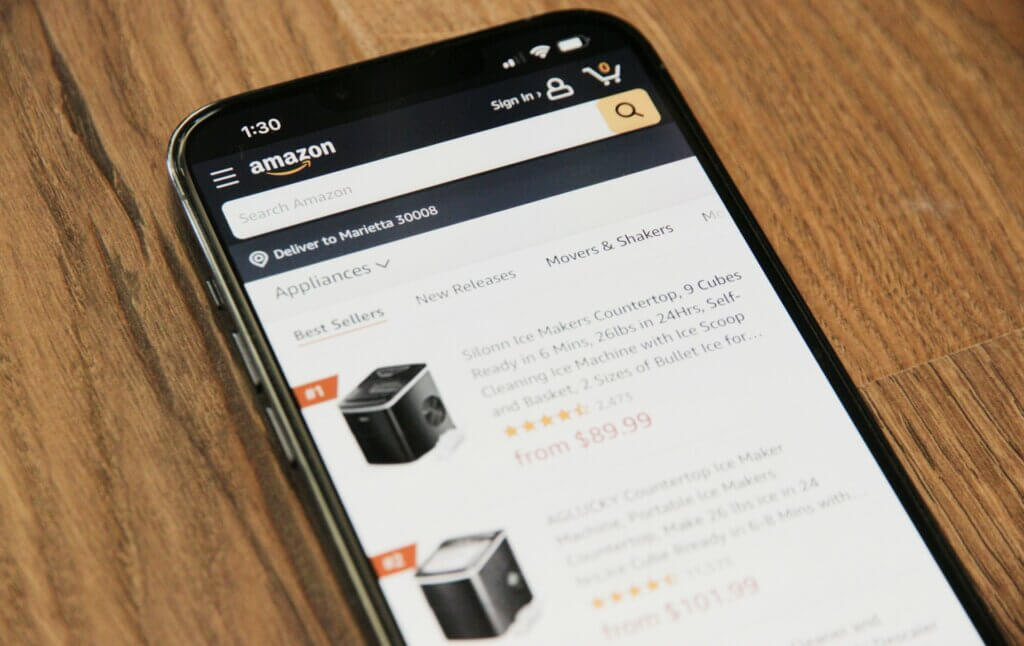- Blog
-
For Sellers
Amazon URL structure types: Canonical URLs, Add to cart URLs, etc.
Your URLs could be boosting traffic or leaking strategy. Here’s how to use Amazon links with purpose.

Most Amazon sellers treat URLs like afterthoughts. Copy, paste, share, and hope for the best.
But here’s what they’re missing: the right URL structure can drive more external traffic, boost conversions, and even influence your keyword rankings. The wrong one? It might accidentally expose your competitive strategy or get your reviews flagged.
Understanding Amazon’s various URL types is a revenue opportunity hiding in plain sight.
Why Amazon URL structure matters for sellers
Amazon URLs do more heavy lifting than most sellers realize. According to Statista, in 2024, organic search drove nearly two billion visits to Amazon annually, with social networks contributing another 351.5 million visits.
This means your product pages need to be discoverable beyond Amazon’s internal search. And the URL structure plays a crucial role in how Google and other search engines index and rank your listings.
Beyond SEO, different URL types serve different strategic purposes. Some URLs automatically add products to carts, shortening the purchase journey. Others filter results to show only your brand’s products, giving you a competitive edge in external marketing campaigns.
The data embedded in these URLs also provides valuable insights into traffic sources and customer behavior. You can use this information to optimize marketing spend and track which campaigns actually drive sales.
Essential Amazon URL types every seller needs
1. Canonical URLs
Think of canonical URLs as Amazon’s official, SEO-friendly version of your product page. Amazon automatically creates these using the first five important words from your product title, combined with your ASIN. The structure includes hyphens and colons to format the title portion, making it readable for both search engines and humans.
Here’s the key insight most sellers miss: while you can’t directly edit these URLs, you absolutely can influence them. The first few words of your product title become part of your canonical URL, so strategic title optimization impacts your external SEO.
Example structure:
- Product title: “Organic Turmeric Capsules for Inflammation Support”
- Canonical URL: amazon.com/Organic-Turmeric-Capsules-Inflammation-Support/dp/B01234XYZ
Since search engines use these URLs to index your products, choosing those first five title words carefully can improve your visibility in Google searches that lead to Amazon.
2. Add to Cart URLs
Add to Cart URLs skip the product page entirely and take customers straight to a page where your product is already in their cart. This removes friction from the buying process and can significantly improve conversion rates for customers who are already convinced.
These URLs require only your product ASIN and the desired quantity to generate. The real advantage comes from their versatility. You can use them in email campaigns, social media posts, or even to simulate voice shopping behaviors that might boost your visibility in Alexa searches.
Strategic applications:
- Email marketing campaigns for repeat customers
- Social media promotions with time-sensitive offers
- Influencer partnerships where you want to minimize purchase friction
3. Frequently Bought Together URLs
This URL type recreates Amazon’s “frequently bought together” widget, but with your chosen product combinations. You can bundle your own products together or strategically pair your items with complementary products from other brands.
This is best used for driving bundled traffic from external platforms. Instead of hoping Amazon’s algorithm will group your products favorably, you control which items appear together and can promote these bundles through social media or other marketing channels.
Bundle opportunities:
- Pairing accessories with main products
- Creating themed product groupings
- Cross-promoting different variations of your items
4. 2-Step Brand URLs
These URLs apply both a keyword filter and a brand filter simultaneously, showing only your brand’s products for specific search terms. This creates a controlled environment where customers see your product lineup without competitor distractions.
The brand isolation benefit makes these URLs particularly valuable for external advertising. When you’re paying for clicks through Facebook ads or Google campaigns, you want to minimize the chance that customers will comparison shop with competitors once they reach Amazon.
Marketing campaign applications:
- Social media advertising where you control the traffic
- Email campaigns to existing customers
- Influencer partnerships focused on your brand
URL parameters sellers should understand
Amazon also embeds tracking data in URL parameters that reveal more than most sellers realize. The “ref” parameters indicate traffic sources and search context, essentially creating a digital trail of how customers found your product.
These ref tags get appended every time someone searches and clicks on your product. While helpful for analytics, they can become a liability when sharing links publicly. Amazon has been known to flag reviews when it can trace the reviewer’s path through these identifiable parameters.
Best practices for link sharing:
- Strip unnecessary query parameters before sharing
- Use only the clean product path and ASIN
- Example clean URL: amazon.com/dp/ASIN/
Long URLs can also expose competitive intelligence by revealing which keywords your products rank for. This becomes a vulnerability when shared in public forums or with potential competitors who might reverse-engineer your keyword strategy.
Common Amazon URL mistakes that cost sales
The biggest mistake sellers make is accidentally exposing their keyword rankings through overly detailed URLs. When you share links that include search terms and ranking positions, you’re essentially handing competitors a roadmap of your SEO strategy.
Another costly error involves ref parameter management. Sellers who don’t clean their URLs before sharing them risk having legitimate reviews flagged by Amazon’s systems. This happens because the ref tags create traceable connections between the seller and the reviewer.
So, in a nutshell, some revenue-killing mistakes are:
- Sharing URLs with embedded search terms
- Ignoring ref tag cleanup before public sharing
- Missing canonical URL optimization opportunities
- Using outdated Super URL methods that violate Amazon’s terms
Best practices for external marketing
Smart URL tracking starts with understanding what each parameter tells you about customer behavior. Use different URL variations for different marketing channels to identify which campaigns actually drive sales versus just clicks.
Amazon Attribution tags offer brand-registered sellers advanced tracking capabilities. You can append campaign-specific parameters to track performance across Facebook ads, Google campaigns, or influencer partnerships.
Attribution examples:
- ?tag=your-tag&ascsubtag=facebook-campaign-123
- ?tag=your-tag&ascsubtag=google-search-winter
Tools like Bitly can help cloak longer Amazon URLs while maintaining tracking capabilities. This is particularly useful for social media campaigns where clean, short links perform better than lengthy Amazon URLs with multiple parameters.
Remember that Super URLs—older methods that included fake search terms—are now against Amazon’s Terms of Service and can result in account penalties. Stick to legitimate attribution methods through Amazon’s official tools.
Turn URL knowledge into revenue wins
Amazon URL mastery separates sophisticated sellers from those leaving money on the table. The sellers who understand canonical optimization, strategic URL creation, and proper parameter management consistently outperform those who treat URLs as technical afterthoughts.
Your next step is clear: audit your current URL usage, clean up any risky ref parameters, and start implementing strategic URL types for your external marketing campaigns. Combined with the right seller tools, these URL optimizations can drive meaningful traffic and conversion improvements.
Ready to optimize more than just your URLs? Try Seller 365 for up to 14 days free and get access to the complete toolkit that successful Amazon sellers use to research products, manage inventory, automate pricing, and track profits—all in one subscription.






















